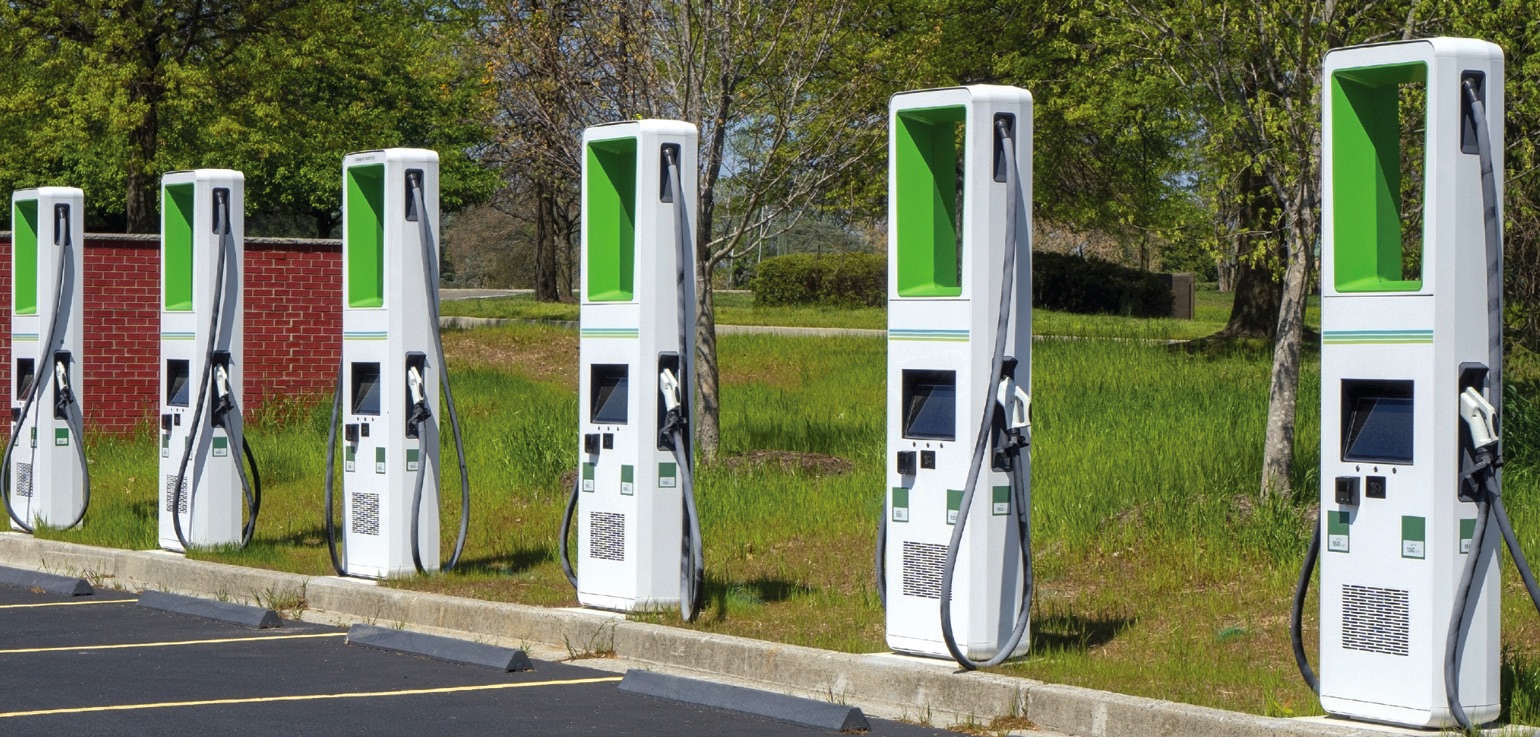Electric vehicle charging stations: Location and costs
Don Smolenski, Contributing Editor | TLT Machinery April 2022
States vary in their strategies for enabling long-distance trips for electric vehicle drivers.

In two recent TLT columns,
1,2 I discussed vehicle electrification—both the aggressive plans for electrification and the infrastructure challenges. In this column, I review how some states are helping address the infrastructure issues. Michigan, for instance, has the Charge Up Michigan Program. This charger placement project specifically involves funding direct current fast charging (DCFC) stations,
3 which are necessary for long-distance electric vehicle (EV) trips. The program focus is within Michigan, neighboring states and Canada. The Michigan Department of Environment, Great Lakes, and Energy (EGLE) is the lead, with utilities also as critical partners. Funding will cover equipment and site preparation and installation costs for DCFC stations. Any public or private organization that has demonstrated EV charging station installation and maintenance experience can apply. They also must have a significant presence in Michigan and be enrolled in a utility EV program. The grant covers reimbursement for up to one-third of the total cost, or a direct match of the amount the electric utility is paying, not to exceed $70,000.
Until DCFC stations are on every corner, it will be no small task to prioritize where to put them. The first phase of the EV charger placement project is to enable long-distance trips for EV users in Michigan, neighboring states and Canada. A goal is to minimize the total cost, including equipment, land acquisition cost and electricity cost. It’s also desirable to minimize EV charge time, encompassing charging, waiting and detours. There was a significant study
4 done to take all of this into account and recommend best locations for charging stations.
Many other states also are planning to support a robust charging network.
5 Hawaii would impose a fee on high-end gasoline-powered vehicles to fund the EV charging infrastructure. Massachusetts enacted a funding bill that includes grants to localities and transit authorities. Oregon would authorize electric and natural gas utilities to recover costs from customers for transportation electrification investments. Virginia would require some new state and local government buildings to be equipped with EV charging stations. These efforts encourage EV charging infrastructure investments while removing barriers to development.
So where are we? There are approximately 2.1 million EVs in the U.S., with only 20,000 DCFC ports and 109,000 total (i.e., level 1, level 2 and DCFC) ports.
6 California leads with more than 931,000 EVs and more than 34,000 total ports. Their ratio of EVs to charger ports is just over 27. North Dakota, in contrast, has the smallest number of EVs with 656 and 134 charging stations. The average number of EVs per state is 42,000 EVs with 14.6 EVs per charger. Michigan is somewhere in the middle. It is interesting that the EV to charger ratio ranges almost tenfold, from 4.2 to 41. The great variation begs the question. Does a large number of EVs cause a greater demand for charging stations, or does the availability of a large number of charging stations help spur a greater demand for EVs? Probably both!
REFERENCES
1.
Smolenski, D., (2021), “Plans for vehicle electrification,” TLT, 77 (10), pp. 78-80. Available
here.
2.
Smolenski, D., (2021), “Vehicle electrification and infrastructure issues,” TLT, 77 (12), p. 120. Available
here.
3.
Available here.
4.
Electric Vehicle Charger Placement Optimization in Michigan: Phase I - Highways (Supplement I: Full Tourism Analysis), Michigan Agency for Energy, Michigan Energy Office. Available
here.
5.
Available here.
6.
Available here.
Don Smolenski is president of his own consultancy, Strategic Management of Oil, LLC, in St. Clair Shores, Mich. You can reach him at donald.smolenski@gmail.com.